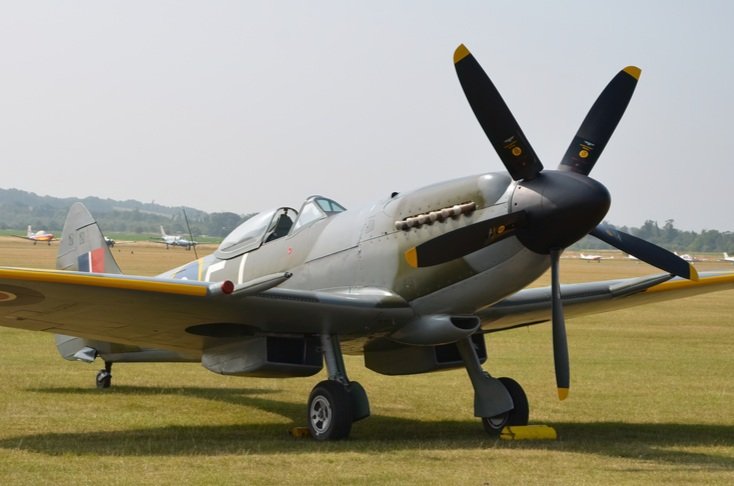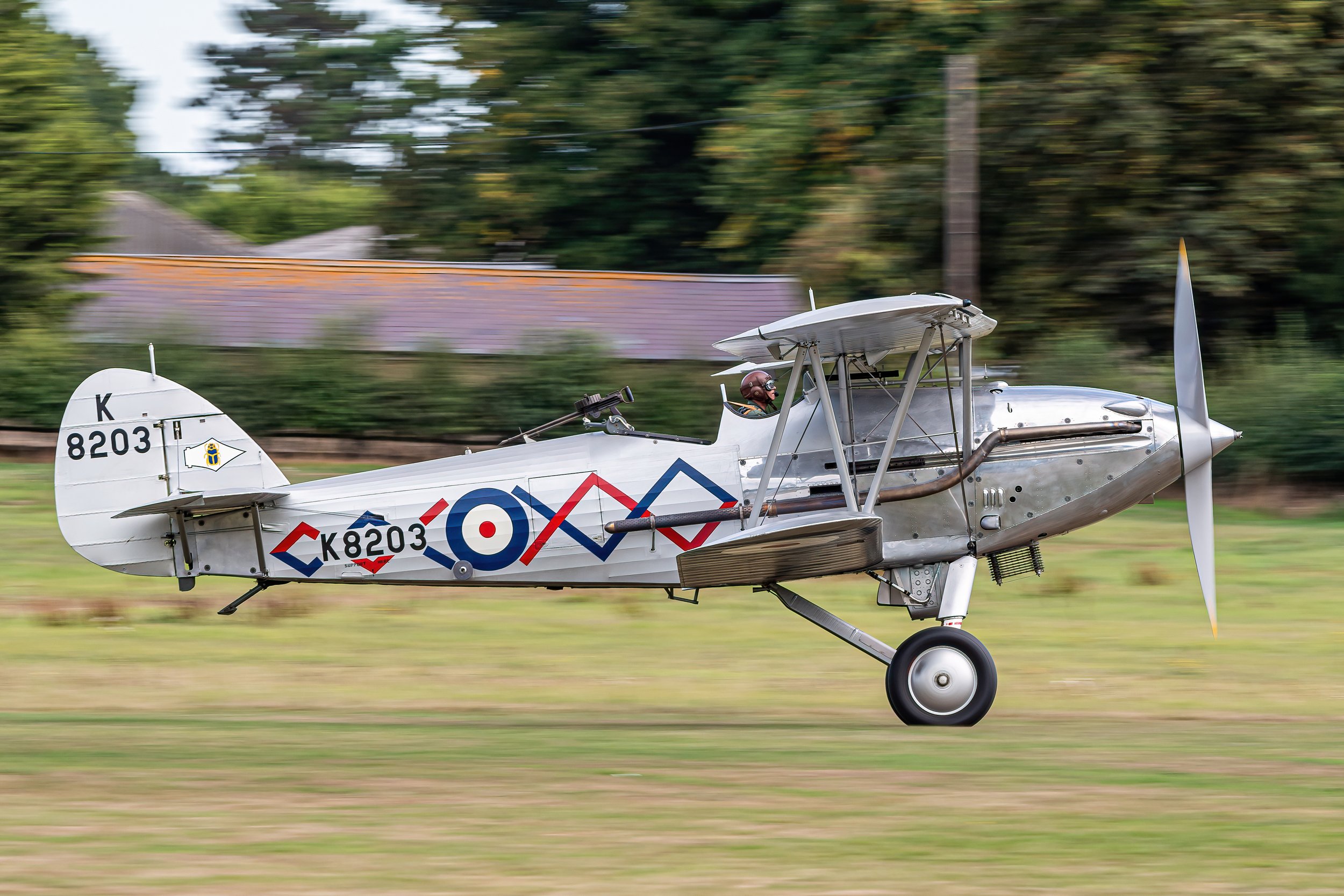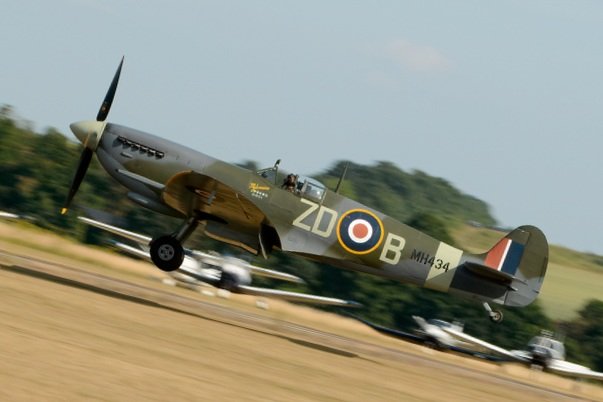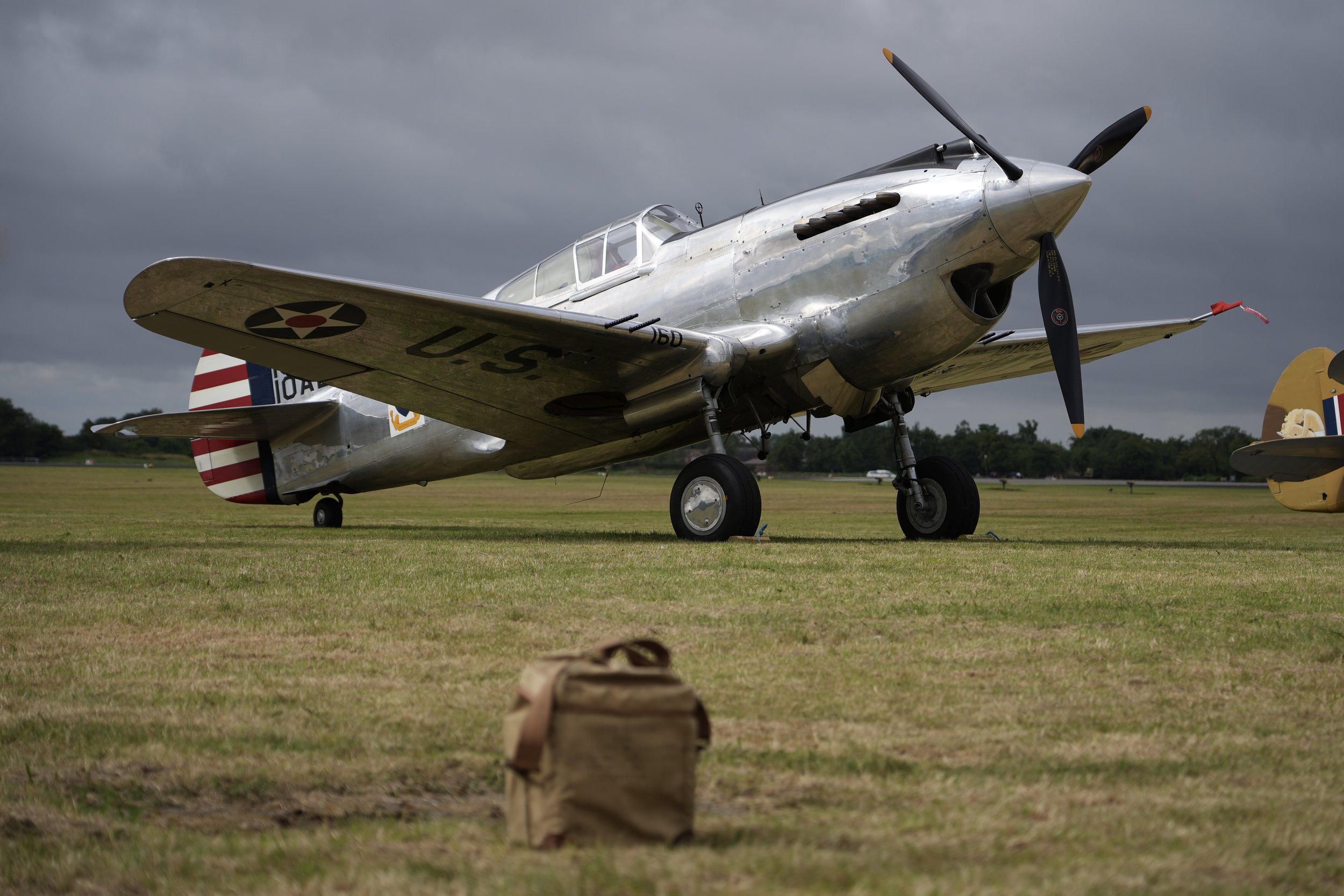BBMF Lancaster
Year built
1945
Aircraft
Lancaster B Mk 1
Base
RAF Coningsby
PA474 was built as a B Mk 1 (B1) by Vickers-Armstrongs Ltd at its Broughton factory near Chester in 1945 and was to be part of the British Tiger Force for strategic bombing in the Far East. Following the end of the war with Japan, the aircraft was not needed and PA474 entered storage. With gun turrets removed it was assigned to Photographic Reconnaissance duties with 82 Squadron in East and South Africa. On return from squadron service PA474 was loaned to Flight Refuelling Limited to be used as a pilotless drone. Flight Refuelling used an Avro Lincoln instead and PA474 was then transferred to the College of Aeronautics, Cranfield, Bedfordshire to be used for trials on the Handley Page laminar flow wing. The test wings were mounted vertically above the rear fuselage.
In 1964 PA474 came under the control of the Air Historical Branch for possible display in the proposed RAF Museum. During this time the aircraft appeared in two films: Operation Crossbow and The Guns of Navarone. PA474 was stored first at Wroughton and then at Henlow then, after a request in 1965 from 44 Squadron, the Lancaster moved to RAF Waddington for restoration back to wartime standard including refitting the front and rear turrets. PA474 was transferred to the Battle of Britain Memorial Flight in 1973. In 1975 a mid-upper turret was found in Argentina and fitted.
During the winter of 1995, the Lancaster was fitted with a new main spar to extend its flying life. On 7 May 2015, the aircraft suffered a fire in its starboard outer engine. A safe landing was made at RAF Coningsby. It flew again on 12 October 2015 after extensive work to fix the damage caused by the fire to the number four engine. It was later announced that with the ongoing maintenance, PA474 should still be airworthy until 2065
| Back to Top |
Avro Lancaster B Mk 1
The Avro Lancaster is a British Second World War heavy bomber. It was designed and manufactured by Avro as a contemporary of the Handley Page Halifax, both bombers having been developed to the same specification, as well as the Short Stirling, all three aircraft being four-engined heavy bombers adopted by the Royal Air Force (RAF) during the same wartime era.
The Lancaster has its origins in the twin-engine Avro Manchester which had been developed during the late 1930s in response to the Air Ministry Specification P.13/36 for a medium bomber for "world-wide use" which could carry a torpedo internally, and make shallow dive bombing attacks. Originally developed as an evolution of the Manchester (which had proved troublesome in service and was retired in 1942), the Lancaster was designed by Roy Chadwick and powered by four Rolls-Royce Merlins and in one of the versions, Bristol Hercules engines. It first saw service with RAF Bomber Command in 1942 and as the strategic bombing offensive over Europe gathered momentum, it was the main aircraft for the night-time bombing campaigns that followed. As increasing numbers of the type were produced, it became the principal heavy bomber used by the RAF, the Royal Canadian Air Force (RCAF) and squadrons from other Commonwealth and European countries serving within the RAF, overshadowing the Halifax and Stirling, two other commonly used bombers.
A long, unobstructed bomb bay meant that the Lancaster could take the largest bombs used by the RAF, including the 4,000 lb (1,800 kg), 8,000 lb (3,600 kg) and 12,000 lb (5,400 kg) blockbusters, loads often supplemented with smaller bombs or incendiaries. The "Lanc", as it was known colloquially, became one of the most heavily used of the Second World War night bombers, "delivering 608,612 long tons (618,378,000 kg) of bombs in 156,000 sorties". The versatility of the Lancaster was such that it was chosen to equip 617 Squadron and was modified to carry the Upkeep "bouncing bomb" designed by Barnes Wallis for Operation Chastise, the attack on German Ruhr valley dams. Although the Lancaster was primarily a night bomber, it excelled in many other roles, including daylight precision bombing, for which some Lancasters were adapted to carry the 12,000 lb (5,400 kg) Tallboy and then the 22,000 lb (10,000 kg) Grand Slam earthquake bombs (also designed by Wallis). This was the largest payload of any bomber in the war.
In 1943, a Lancaster was converted to become an engine test bed for the Metropolitan-Vickers F.2 turbojet. Lancasters were later used to test other engines, including the Armstrong Siddeley Mamba and Rolls-Royce Dart turboprops and the Avro Canada Orenda and STAL Dovern turbojets. Postwar, the Lancaster was supplanted as the main strategic bomber of the RAF by the Avro Lincoln, a larger version of the Lancaster. The Lancaster took on the role of long range anti-submarine patrol aircraft (later supplanted by the Avro Shackleton) and air-sea rescue. It was also used for photo-reconnaissance and aerial mapping, as a flying tanker for aerial refuelling and as the Avro Lancastrian, a long-range, high-speed, transatlantic passenger and postal delivery airliner. In March 1946, a Lancastrian of BSAA flew the first scheduled flight from the new London Heathrow Airport.
| Back to Top |




















| Back to Top |

































